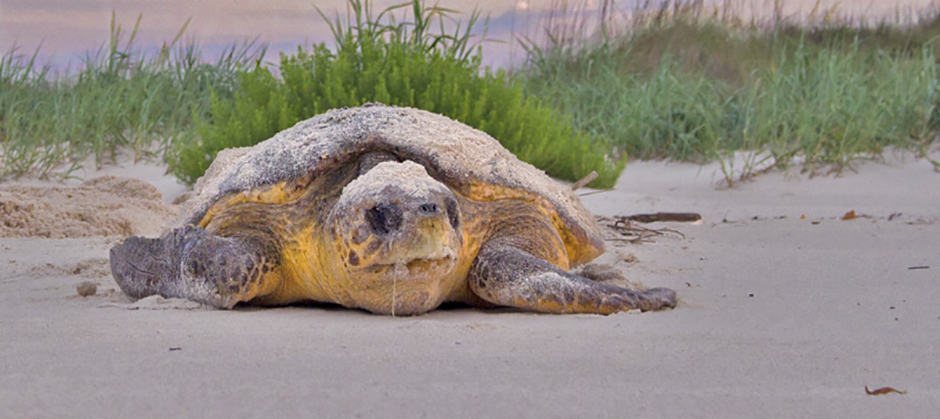Share this article
For sea turtles, climate change harms dwarf short-term gains
While the long-term effects of climate change are likely to spell trouble for sea turtles, researchers found that some populations could see short-term benefits.
Looking at 17 loggerhead sea turtle (Caretta caretta) nesting beaches along the Brazilian coast, biologists found some beaches could see a boost in hatchlings as temperate climates warm and become more conducive to the incubation of loggerhead eggs. Similar effects are likely to occur elsewhere in the turtles’ vast range, which extends from the shores of Newfoundland to the beaches of Australia, researchers believe.
“If we’re thinking about the short-term, there are going to be some benefits,” said Mariana Fuentes, an assistant professor in FSU’s Department of Earth, Ocean and Atmospheric Science and co-author on the study published in Scientific Reports. “Some areas that currently are not optimal for sea turtle egg incubation because they are too cold may become more optimal as temperatures increase.”
Those short-term benefits are likely to disappear in the long term, though, Fuentes said, as temperatures continue to rise and become too warm for sea turtle eggs to incubate. Rising temperatures are also causing sea turtles to produce more females. Sea turtle sex is determined by temperature, meaning population numbers could rise in the short term, Fuentes said, but they are likely to fall in the long run as fewer males are available for reproduction.
“The main issue is that populations are already depleted, and they’re experiencing a multitude of threats,” she said. “Sea turtles have been around for millions of years and they have adapted to climate change, but now, not only is the rate of climate change a lot faster but populations are experiencing a multitude of threats simultaneously. So a population that might have been able in the past to adapt and shift its nesting grounds or nest at a different time of the year will likely have a harder time adapting.”
Applying a range of climate change scenarios, from conservative to extreme, Fuentes and her team looked at how turtles might be impacted by the end of the century at three states along the Brazilian coast — tropical Bahia and more temperate Espirito Santo and Rio de Janeiro. Air temperature and precipitation proved to be the main drivers of hatchling production. Hatchling numbers were likely to decrease in Bahia as temperatures warmed, but they were predicted to increase at the other two sites.
This could have management and conservation consequences, researchers concluded, if sea turtles shift where and when they nest throughout their range.
“Here in Florida, the nesting season is from May to August,” Fuentes said. “Most of the monitoring occurs during that timeframe. We have to reevaluate that and rethink when we’re conducting our management and protection.”
Meanwhile, these changes are likely to be accompanied by other environmental impacts, including beach erosion, coastal development and pollution, which could impact population numbers, she said.
“One way to minimize the impact and increase sea turtle’s resilience to climate change is by addressing other impacts, which will give then a better chance to bounce back,” Fuentes said.
Header Image: Some loggerhead sea turtle populations are likely to benefit from climate change in the short term as beach temperatures warm. ©Matt Ware, FSU MTRECG. Taken during permitted research activities.








